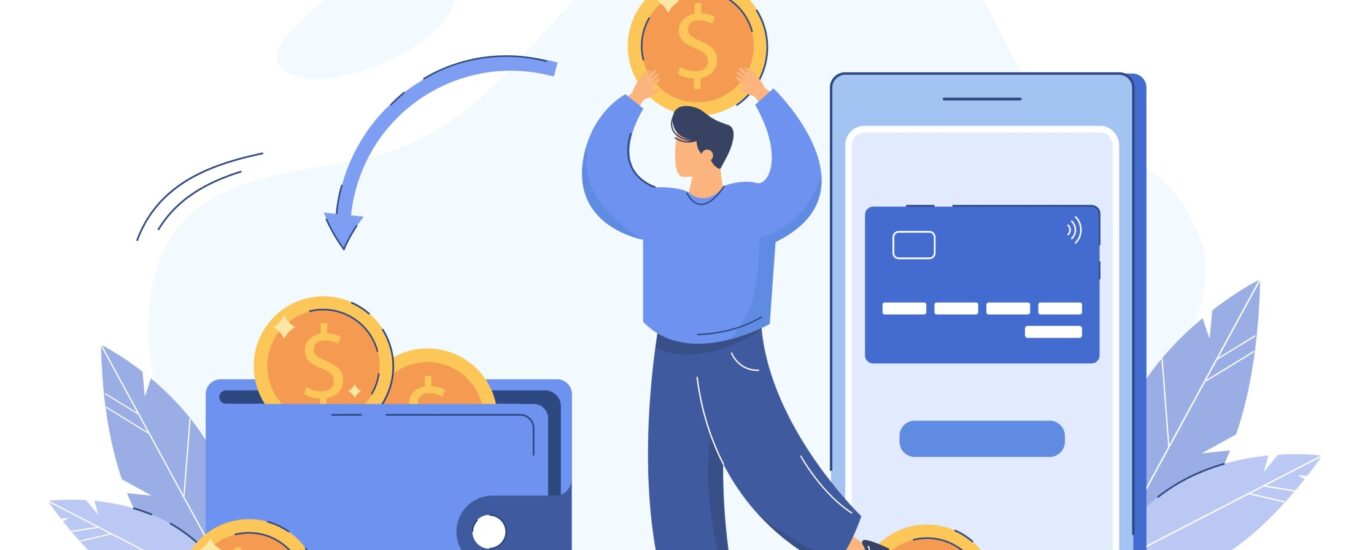Introduction: Digital Payments’ Growing Significance
The continuous transition of commerce from brick-and-mortar storefronts to virtual and mobile platforms has made it imperative for companies in all sectors to keep a close eye on and take proactive measures regarding digital payment trends and technology. Keeping up with the latest digital payment options, security capabilities, integrations, and consumer preferences is crucial for merchants looking to increase sales, enhance operational efficiency, offer a seamless omnichannel commerce experience, and maintain competitiveness in the contemporary marketplace. Payment methods that customers choose to use in any transaction environment constitute a fundamental part of the customer journey.
Outlining Digital Payments and Important Components
Any non-cash payment transaction made online, on a mobile device, or with a digital support network is considered digital. These include mobile app purchases, in-store mobile readers, e-commerce websites, and more. The following are some of the significant factors presently influencing the intricate world of digital payments:
- Mobile wallets – Apps for mobile payments, such as Apple Pay, Google Pay, Samsung Pay, and others, that facilitate contactless transactions by letting users store their credit/debit cards digitally and use their phones to make payments; particularly useful for in-person point-of-sale transactions.
- Cryptocurrencies – Blockchain technology is used by decentralized digital currencies like Bitcoin, Ethereum, and many others to facilitate peer-to-peer electronic payments and transactions without the need for mediators.
- Purchases made from participating merchants can be broken up into a few interest-free instalments over time rather than being paid in total upfront with point-of-sale instalment lending services such as Affirm, Afterpay, Klarna, and others.
- Peer-to-peer payment apps – Online and mobile platforms such as Venmo, CashApp, Zelle, and PayPal that facilitate quick and simple money transfers, direct payments, and cost-sharing amongst friends, family, and other connections.
- Bank-issued cards with embedded microchips, near-field communication (NFC) antennas, or other technologies that enable speedy tap-to-pay transactions at compatible point-of-sale terminals without requiring card insertions or signatures are known as contactless credit/debit cards.
- International remittances – Cross-border electronic money transfers made possible by digital networks and services that let businesses, immigrants, and ex-pats send money to recipients back home at a reasonable cost.
Advantages of Businesses Adopting Digital Payments
For today’s merchants across sectors, adopting and integrating new technology and digital payment capabilities offers numerous advantages, such as:
- Increased sales – Conversion rates, transaction completion, and eventually revenue and sales volume are directly increased when customers can pay with their preferred method and the newest features during online and in-store checkout.
- Enhanced security – Advanced encryptions, tokenizations, biometrics, AI fraud detection, and other security features are all included in digital payment transactions, which help significantly lower the risks associated with fraud, theft, and data breaches.
- Enhanced operational efficiency – Digital payment solutions simplify everything from back-end payment processing to checkout procedures, saving labour and time that would otherwise be spent on these tasks.
- Enhanced business intelligence – Digital payments create precise transaction data, yielding essential insights to help businesses make wiser decisions overall in areas like operations, marketing, sales, and more.
- A competitive advantage – Offering increasingly sophisticated, seamless, and adaptable payment methods enables companies to remain competitive while drawing in new clients and fostering engagement and loyalty with current ones.
Difficulties in Integrating Digital Payments
However, modern merchants face some obstacles and difficulties when it comes to streamlining digital payments across channels, including:
- Implementation costs – Depending on the state of the infrastructure, converting systems to accept digital payments frequently necessitates up-front expenditures in new point-of-sale hardware, software integrations, employee training, and other related expenses.
- Incomplete selections – The rapid emergence of new payment methods, suppliers, and capabilities complicates sorting through the vast array of options and deciding which to use.
- Aspects to consider for compliance – Complexity is increased by various data laws, standards, and licensing requirements, particularly for international businesses that accept payments from different parts of the world.
- Impaired safety measures – As there are more digital endpoints, there are also more potential weaknesses that hackers could try to take advantage of, which is why strong security measures are crucial.
- Importance of consumer education – Retailers need to have plans in place for educating customers and offering the necessary support when it comes to new payment technologies like Bitcoin and mobile wallets.
Important New and Emerging Trends in Digital Payments
The following are some of the most important new and existing developments in digital payments that progressive retailers need to be aware of:
- Surging contactless payments – Tap-and-go contactless payments using contactless cards and mobile wallets are quickly surpassing cash globally, driven by COVID-19 health concerns. By 2023, Mastercard predicts that 90% of all in-person transactions will be contactless.
- Mainstreaming virtual currency Including cryptocurrency payment choices like Bitcoin could be essential for drawing in younger, tech-savvy customers as public awareness and use of digital money increase.
- Instant real-time payments – Technologies that facilitate account-to-account payments in real-time provide instant access to funds, significantly enhancing cash flow and satisfying consumers’ increasing need for fast satisfaction.
- Emergence of “invisible” payments – Cutting-edge technologies like RFID, biometrics, and visual analysis offer smooth “invisible” commerce experiences through linked devices, environments, and users.
- The rise of biometric authentication – Payment security is increased by authentication choices such as fingerprint, face, or iris scanning, providing frictionless convenience and enhancing user experience.
Prospects for Digital Payments in the Future
Looking to the future, we anticipate the following significant themes to emerge:
- The emergence of smartphones as the primary mode of payment – Mobile phones will eventually replace Cash and physical cards as the primary form of payment for in-app, in-store, and online transactions.
- Distinguishing between financial services and payments – Payment companies, such as Apple and PayPal, aim to broaden their range of services by including loyalty programs, cryptocurrency, banking, investment, and financing.
- Advancing personalization – Using artificial intelligence and stored customer data, payments will become more contextual and tailored to match people’s purchasing behaviours and preferences for specific products and brands.
- New and creative authentication methods – Novel payment authorization strategies that balance security and convenience will be made possible by developments in biometrics, behavioural analysis, cloud computing, and other security technologies.
- Changing developments in regulations – Governments everywhere will keep up their efforts to combat risks, promote more inclusive and accessible finance, safeguard consumers, and promote innovation.
Conclusion: Crucial Experiences Are Shaped by Digital Payments
Optimizing digital payments is essential for customer experience, revenue growth, operational efficiency, security, and ongoing innovation in a company environment where digitalization is becoming the norm. Companies need to stay updated with the newest payment trends, alternatives, integrations, legislation, and best practices to create great commerce experiences that will propel their organization into the future. This is because commerce habits and technology are becoming increasingly complex.
Commonly Requested Questions
Q: Which digital payment is now the most common and expanding the fastest?
A: Due to consumer desire to minimize in-person interactions and cash usage during the pandemic, mobile contactless payment programs such as Apple Pay and Google Pay have recently witnessed enormous user acceptance increases, particularly for in-store point-of-sale purchases. This increase is anticipated to pick up speed going forward.
Q: Which sectors are now setting the standard for innovation and acceptance of digital payments?
A: Regarding payment tech adoption and innovation, the retail, food & beverage, and travel industries have typically taken the lead. Nonetheless, as consumer patterns change, digital payments are developing and growing in almost every industry and area.
Q: How can companies get ready for digital payments in the future?
A: They should concentrate on developing adaptable, integrated systems, using data analytics, and preserving agility. It’s also critical to prioritize compliance and security. Thorough staff training and education are also crucial.
Q: How will digital payments be affected by a prospective cashless society?
A: Although paper money will likely continue to exist in some form, as digital payments grow more convenient and embedded in consumer behaviour, their use may decrease sharply. Businesses need to plan for a lower reliance on cash.
Q: How can companies get the most out of payment data?
A detailed examination of payment data yields customer insights that may be used to influence product development, forecast sales, enhance operations, personalize experiences, and find new opportunities.
Q: Are electronic payments more vulnerable to fraud than paper money transfers?
A: Digital transactions certainly have inherent dangers like any other payment method. To dramatically reduce fraud, current digital payments include advanced security features, including biometrics, tokenization, AI fraud detection, and cryptography.
Q: Will cryptocurrency payments become widely accepted by consumers?
A: The adoption rate is rising steadily, particularly for more recent coins with a broad appeal like Bitcoin. However, price volatility and a lack of regulations prevent mass consumer acceptance. Long-term, this may change.
Q: How do “buy now, pay later” instalment programs affect a company’s sales?
A: BNPL can reduce purchase friction and boost customer purchasing power for more expensive items by spreading expenses over time. However, buyer defaults and merchant fines may present dangers if they are not handled correctly.



